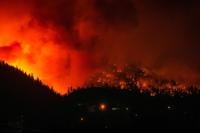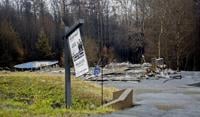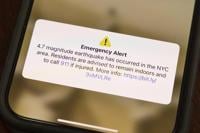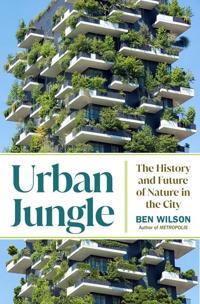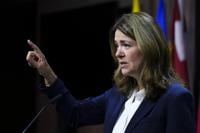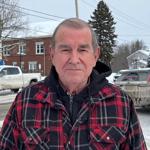BOGOTA, Colombia (AP) — A week before what the Indigenous Krenak people now call “the death of the river,” they say they could feel it coming. The birds stopped singing, the air grew heavy, and an unusual silence settled over their village in Minas Gerais, a southeastern Brazilian state where forested hills give way to the winding Doce River.
Then, on Nov. 5, 2015, the mud came.
A mining dam owned by Samarco — a joint venture between Brazilian company Vale and Anglo-Australian giant BHP Billiton — burst upstream near the town of Mariana, unleashing a torrent of toxic iron ore waste. It buried the nearby community of Bento Rodrigues and swept down the Doce River valley, and contaminating waterways for nearly 600 kilometers (370 miles) before reaching the Atlantic Ocean.
For the Krenak people, who once relied on the river for food, rituals, and daily life, the damage was not just environmental but spiritual.
“It was the saddest day for my people,” said Shirley Djukurnã Krenak, an Indigenous leader whose community has lived for generations along the Doce River. “We felt the death of the river before it arrived.”
The Mariana disaster poured an estimated 40 million tons of mining waste into the Doce basin, devastating one of Brazil’s most ancient river systems, whose valley has shaped the landscape of Minas Gerais for millions of years.
Ten years later, reconstruction and reparations have dragged on through legal disputes, and the river remains contaminated by heavy metals. Local communities say little has changed, even as Brazil strives to define itself as a leader of global climate policy while hosting the United Nation’s COP30 climate summit — an event some are skeptical will bring change.
“For us, the fight isn’t about speeches at COP,” Krenak said. “It’s about survival.”
A test for Brazil’s climate credibility
Brazilian President Luiz Inácio Lula da Silva now hopes to cement his reputation as a global environmental leader at COP30 in Belem, at the heart of the Amazon. Yet the unresolved legacy of Mariana and other recent policy moves reveal the distance between Brazil’s climate discourse and reality, according to Maurício Guetta, legal policy director at the advocacy group Avaaz.
“It’s contradictory for a country that wants to lead on climate to keep approving laws that reduce protection for nature and Indigenous rights,” he said, adding that Indigenous territories are among the world’s most effective barriers against deforestation.
Indigenous congresswoman Célia Xakriabá, who represents Minas Gerais, said the tragedy remains “a crime still in progress.”
“The Doce River is still sick. The fish are contaminated, the people are ill, and children still ask when the river will be healed,” she said. “You can’t bring back 19 lives, and you can’t bring back a healthy river.”
Xakriabá said the lack of justice for Mariana victims undermines Brazil’s credibility ahead of the summit.
“It’s hard to talk about climate leadership when the state where this crime happened hasn’t even recovered,” she said. “True environmental policy starts with justice for those living the consequences.”
After the 2015 collapse, the state of Minas Gerais weakened its environmental licensing laws — a move Guetta said directly contributed to the , which killed 270 people.
In October 2024, Brazil’s government and the states of Minas Gerais and Espirito Santo signed a , the mine’s operator, and its owners, Vale and BHP, to fund social and environmental repairs. The record deal which will bring the total payment to 170 billion-reais ($30 billion) includes aid for affected communities, but critics say deeper flaws in Brazil’s environmental governance remain.
“The Mariana disaster showed how fragile Brazil’s system of environmental control really is,” Guetta said. “Instead of learning from it, we’ve seen a process of deregulation.”
Brazil’s Congress approved a law in 2023, which restricts Indigenous land claims, and what activists call the “devastation bill,” which would relax environmental licensing nationwide. Environmentalists warn both threaten to undermine the country’s own climate goals under the Paris Agreement, the 2015 global pact to curb greenhouse gas emissions and limit global warming.
Now, Brazil’s Congress is also considering a national bill that would further loosen oversight of mining and industrial projects and “practically dismantle Brazil’s environmental licensing system,” Guetta said.
He added that Brazil’s environmental agencies remain underfunded and understaffed, even as mining and agribusiness expand deeper into fragile ecosystems.
Brazil's environment ministry did not respond to a request for comment.
Skepticism over ‘Indigenous COP’
Krenak told The Associated Press that her community will not be attending COP30. She sees the climate summit as distant from the realities faced by Indigenous peoples and full of “greenwashing” and false promises.
“If all the previous COPs had worked, we wouldn’t still be talking about crimes like this,” she said.
Instead, she said, true climate action begins with protecting rivers and forests — and recognizing Indigenous territories.
Anthropologist Ana Magdalena Hurtado, who has spent decades working with Indigenous communities in South America, said she shares that concern.
“My worry is, this all looks very pretty, but the people who will walk away feeling wonderful are the urban academics and policymakers — not those living in remote territories,” said Hurtado, a professor of anthropology and global health at Arizona State University.
She said dedicating space to Indigenous voices at COP30 is a welcome step, but warned that inclusion without follow-up can do more harm than good.
As COP30 kicks off, many Indigenous leaders share that skepticism but remain hopeful.
“I still believe change is possible," Krenak said. "That one day, our children will be able to drink a glass of water without fear of dying.”
___
Associated Press writer Melina Walling contributed to this report from Chicago.
___
The Associated Press’ climate and environmental coverage receives financial support from multiple private foundations. AP is solely responsible for all content. Find AP’s for working with philanthropies, a list of supporters and funded coverage areas at .














